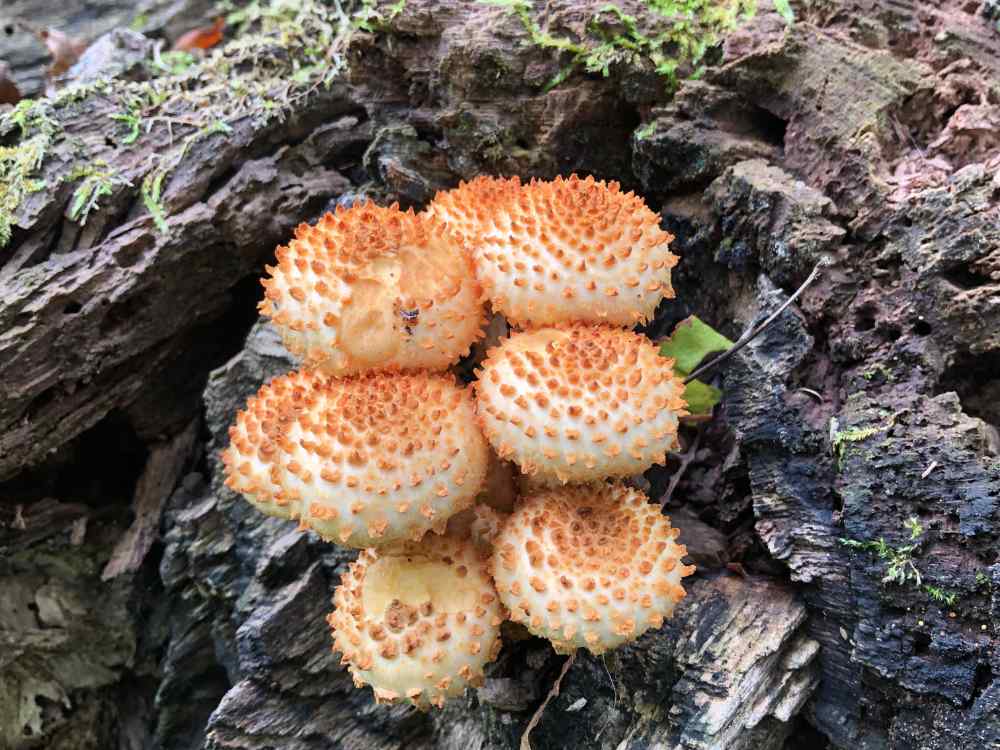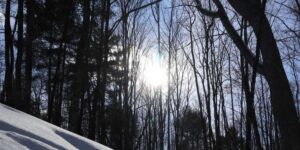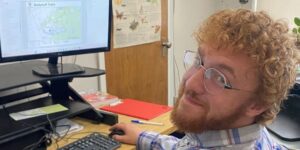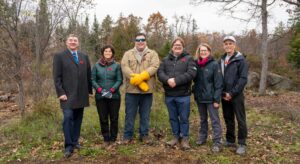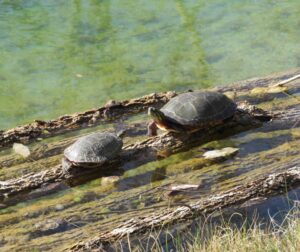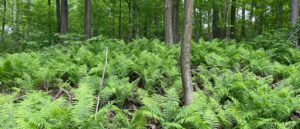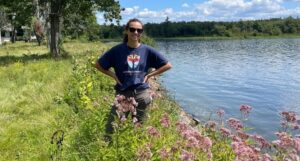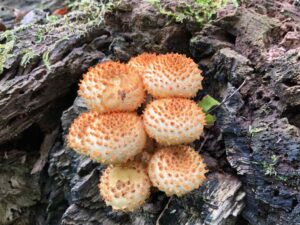Photo: Shaggy Scalycap mushroom. (Rosalind Chaundy)
By Susan Scott, KLT Volunteer
What do cheeses, mushrooms, and beer have in common?
They are all made with fungi: Edible mushrooms are delicious and add healthy carbohydrates, proteins, and essential fatty acids to our diets. Molds like Penicillium Roqueforti and Penicillium Camemberti ripen blue cheese and Camembert. And yeast is used to make beer.
Fungi are everywhere – according to Kew Gardens State of the Worlds Plant and Fungi 2023 (PDF), there are estimated to be 2.5 million species of fungi worldwide, of which only 155,000 species have been formally named. They can be found in nearly all environments – from soil and air to water and even within other organisms. In nature, they are particularly common in moist, shaded areas with organic matter, such as forests, compost piles, and decaying wood.
Fungi have so many roles to play in our world that it’s hard to cover them all – from nutrition and medicine to the formation of soil and enhancing soil’s ability to sequester carbon. Our various ecosystems couldn’t exist without them, nor, likely, could we.
“Fungi play an unsung role in our lives,” shares Hayden Wilson, Land Stewardship Manager, “They are in every single ecosystem, not just a forest, a prairie, or an ocean.”
Fungi belong to their own “kingdom,” which is separate from those of plants, animals, and others. Many of the fungi that exist are microscopic – so small, we can’t see them with the naked eye.
“There are probably more species of fungi in the Kawarthas than there are bird species in Canada,” Wilson shares.
The above-ground part of the fungi you might see on a hike or walk, also called the “fruiting body,” is the most easily recognizable part of a fungus and what we often call a mushroom.
Fungi can also be found in water, either free-floating or attached to submerged plants or wood. These water-based fungi are usually more microscopic than other land-based fungi.
While we think about preserving species of birds, mammals, insects, and plants, we might not think about caring for fungi as well, but should. What can we, as individuals, do? On a macro-level, Hayden says that ensuring diversity in our ecosystems and habitats makes a difference.
“The more diverse the ecosystem is, the stronger and more resilient and resistant to diseases and non-invasive pathogens fungi will be,” says Hayden.
“Fungi like to munch on any decaying organic matter. Things like yard and food waste, leaves, sticks, and the natural ‘debris’ found in natural spaces,” said Wilson. “Leave your yard a bit ‘messy’ and fungi will love it.”
Protecting more of our natural lands also contributes to ensuring a broad diversity of fungi on the landscape.
There’s lots more to learn about fungi, including the ecosystem services they provide. If you’re curious and want to explore their roles in our environment, Hayden will be leading a hike, “Exploring Fungal Networks,” on Sunday, September 14, 2025, from 10 a.m. to 12 p.m. (noon) at John Earle Chase Memorial Park (a KLT-managed, Parks Canada-owned property) in Lakehurst near Buckhorn.
Please register to attend this free event as spots are limited.
The event is part of KLT’s 2025-2026 third-annual Passport to Nature series of free events in nature. We’re thankful to sponsors, donors, volunteer, facilitators, and partners who make it possible.

